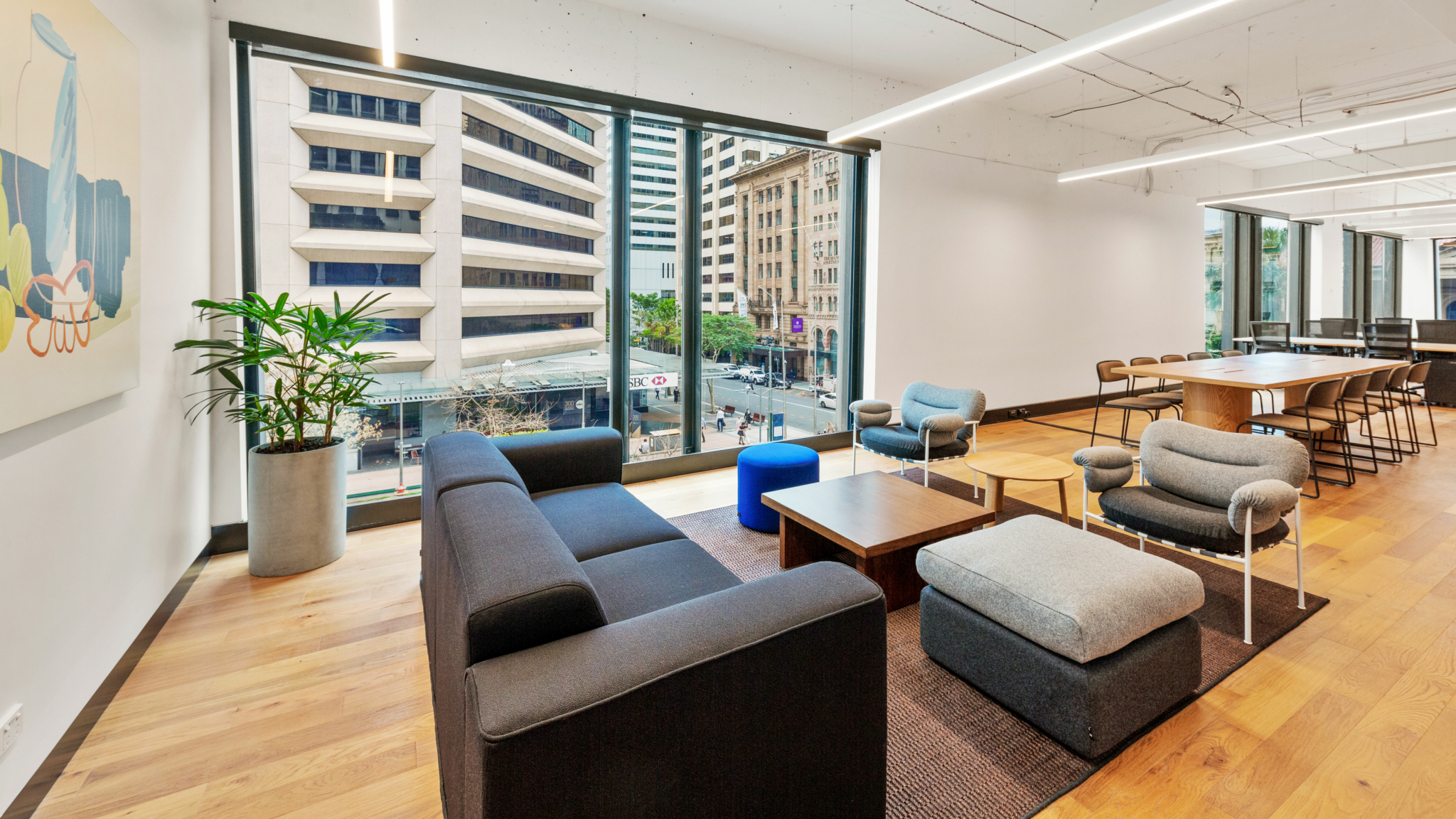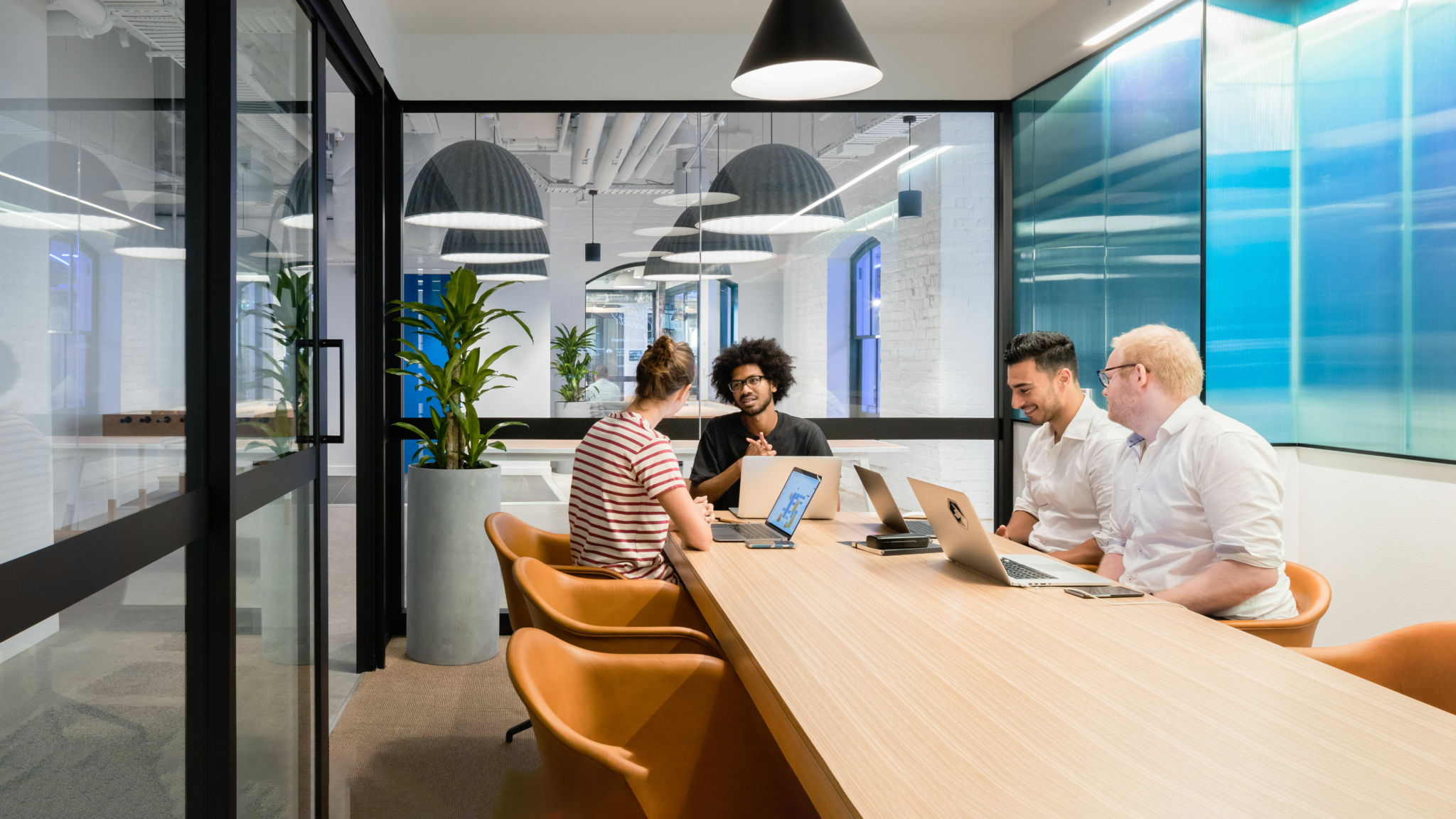Ensuring that every WeWork location—over 800 locations in 38 countries—is adhering to the strictest COVID-19 guidelines is a titanic task. It requires teams from different departments such as facilities, operations, and community—located in places around the world—to work in lockstep.
But big complex projects are WeWork’s speciality. And after months of coordination across many teams, WeWork was recognized for our health and safety efforts and awarded a Global Certificate of Conformity from Bureau Veritas, the internationally renowned testing, inspection, and certification organization.
The certificate is the culmination of a global endeavor to prioritize safety as much as possible for both community members and staff. In order to earn it, WeWork team members rolled out and monitored processes that examined HVAC systems in individual buildings, ensured a steady supply of hygiene equipment, standardized global approaches to physical distancing, and more. WeWork also retained leading health and security services company International SOS to provide strategic direction.
The operational and strategic efforts required were staggering. We spoke to teammates around the world who worked to achieve the certification to learn more.
WeWork: What does getting certified by Bureau Veritas entail? What does it mean for an organization to attain it?
Kevin Kirkbride, soft services senior manager, in San Francisco: The process was made up of two parts, the first being a Certificate of Policy Assurance. We collaborated with global and regional teams and came up with a response to COVID-19. We implemented new policies, procedures, and some physical assets as well. Bureau Veritas looked at our consolidated approach and issued a Certificate of Policy Assurance based on our approach being in line with the guidelines of the Centers for Disease Control (CDC) and the World Health Organization (WHO).
We then did a secondary process, a Certificate of Implementation. It assured our members that our response was not only a corporate response to the global pandemic but an actual site-by-site implementation of that response.
Jordan McBride, director of facilities management, in New York City: From an operational lens, we had to roll out things across hundreds of buildings simultaneously, so we built a program that we could implement systematically. If there were any gaps we addressed them and made sure that every building was compliant, so that our teams and members had the assurance that our spaces were as safe as possible. The certification process allowed us to assure our community of that consistency and quality control.
Does the certification signal something to the WeWork community around COVID-19 protocols?
Junice Lee, senior regional facilities operations manager, in Singapore: Yes, without a doubt! Members and vendors are able to have peace of mind knowing that we value their safety and well-being. Our sales team will be able to sell the spaces with better leverage knowing that the operations and community teams have covered all the bases. WeWork employees, too, can enter the space knowing that the company is going the extra mile to prioritize safety and security.
Adam Weinke, Northern California area director, in San Francisco: It really puts that stamp that we are putting health and safety first. It shows our members and employees that we are best in class—not just among other flexible space providers but among really any workplace. I walk in and out of building lobbies every single day. And I always feel the most comfortable when I walk into a WeWork because we’ve set the example.
How did your teams prepare for the certification process? Was there anything that you needed to change tactically or operationally?
Lucia Jimenez, operations project director, international, in London: We had a very solid and comprehensive COVID-19: Space Solutions Implementation Guide. This, together with our health and safety measures and response plans, gave us a very good starting point to present to Bureau Veritas for them to advise, recommend, and validate what we were doing.
We needed to gather all the policies, protocols, and standards related to COVID-19 in one place and coordinate with multiple stakeholders cross-functionally to ensure we were globally aligned. Understanding how to deploy COVID-19 control measures across all countries, where each one of them has a different rhythm of COVID-19 evolution, is key for a global policy to be effective.

McBride: We did an internal audit phase. So we went through every building and called out any gaps or misses, and worked with our landlords in buildings where they maintained our HVAC systems to understand whether those locations were up to standard with the right filters, and whether we’re getting fresh intake and understanding what capacity of fresh air is going into the buildings.
Chelsea Chéret, director of operations, southern Europe, in Paris: Our facilities operation managers and community teams did a fantastic job auditing every single building across southern Europe to ensure that all policies were implemented correctly.
Lee: There were several changes implemented on the ground, including but not limited to:
- Implementing higher-frequency wipe-downs for high-touchpoint areas
- Sourcing contingency suppliers locally and stocking up on alcohol-based sanitizers, wet wipes, masks, gloves, and more
- Aligning cleaning options with the different stakeholders
- Aligning HVAC enhancements and air management with building management
- Conducting remote audits via Zoom calls for buildings with entry restrictions, lockdowns, and the lack of staffing at certain sites
All of which would not have been possible without great teamwork from the local facilities operations managers, community teams, and most importantly, our community service associates!
What did you learn from the certification process? Were there aspects of health and safety practices that you got a deeper understanding of as you went through the process?
Kirkbride: I think the challenge from my standpoint is that we had to become very intimate with our buildings. We had to understand every single HVAC unit in the building and what it was able to deliver. We had to peek under every rug and behind every corner to make sure that every part of the space was in tune with what our approach was.
Jimenez: I learned that no detail is too small, even if you think it is common sense. We needed to be clear and precise. We are a global company, and the importance of being accurate where general policy applies and where local regulation applies is fundamental to being compliant.
Chéret: We learned so much during the process, especially about business continuity planning and sharing best practices on matters such as de-densification controls and the rollout of new assets.
Weinke: It taught our communities to think long term as well. This is not something that we wanted to look at as, “All right, I want to do this one time, and then we’re done.” This is something we’re now auditing every day we’re open.
What surprised you during this process? What were the challenges you faced when you were preparing?
Jimenez: First, the broad topics that the certification covered. We didn’t only address face masks and physical distancing. We discussed well-being, mental health, stress, internal quality assurance, protocols for cleaning, travel advisory information, policy awareness, signage on elevators, food and beverage best practices, and a lot more.

McBride: The biggest challenge for me was intimately understanding HVAC in more buildings than I would have thought about. Diving into the weeds around HVAC forced us to make the right adjustments and partner with our landlords in locations where they maintain our HVAC systems.
Jimenez: Once we completed the review, the Bureau Veritas technical advisor was impressed by five main points:
- The extent of consideration of HVAC as a COVID-19 control measure
- The great resources on well-being found on the employee Intranet site
- The clarity of the COVID-19 Space Solutions: Implementation Guide, particularly the diagrammatic approach
- The clarity of the guidance for our internal COVID-19 audits
- The openness, transparency, friendliness, and proactiveness our team showed during the assessment
Although this did not necessarily surprise me, it made me feel proud of what our teams did before a third-party organization validated our solutions.
Ensuring a global network like WeWork all adhered to the same guidelines was no doubt difficult, but what aspect of the company culture helped make the process easier?
Kirkbride: It’s based around the concept that drives WeWork, which is flexibility. And it’s about being able to pivot, to go through challenging situations, to give and take. WeWork has a unique ability to flex, and we were set up to be able to move through the processes more quickly than a lot of other companies who are a little bit more rigid.
Chéret: For our team, nothing is more rewarding than hearing positive member experience feedback across the territory and this can no doubt be accredited to having one set of guidelines. The success of its implementation was made possible by our One Team culture.

Lee: Striving to be better, together! It was heartening to see how this was even more prominent during this whole audit process. The different teams (including community and operations) moved with a shared purpose to improve and grow to provide better experiences, not just for members, employees, vendors but for literally everyone who has or will be entering our space.
What would you recommend for other organizations going through this process? What are your takeaways from it all?
Weinke: Strive to be better, together. We’re a complete team, not one part of the organization. We all did this together. And then second, I’d say, is be entrepreneurial. Unless you’re a hundred years old, nobody’s dealt with a global pandemic. We had to think creatively. And I don’t think as an organization, we were afraid to do that. We all threw our best ideas out there, and it led to success.
McBride: What I would recommend is to have a deep understanding of local regulations. Government mandates for commercial spaces varied from market to market, so in order for us to be able to move as swiftly as we did, we always had to have a constant connection to what local legislation was rolling out in order to make sure that we were compliant.
Lee: This pandemic is going to be around for some time, whether we like it or not. We cannot eliminate this virus, but we can, at the very least, do our part to minimize the spread of it. It may be a lengthy process, but once we get the essential checklist and key pointers in place, these best practices should be a part of daily operations and not something that we only look out for during an audit. We cannot be complacent and should strive to ensure consistency throughout all buildings at all times.
Rethinking your workspace?










